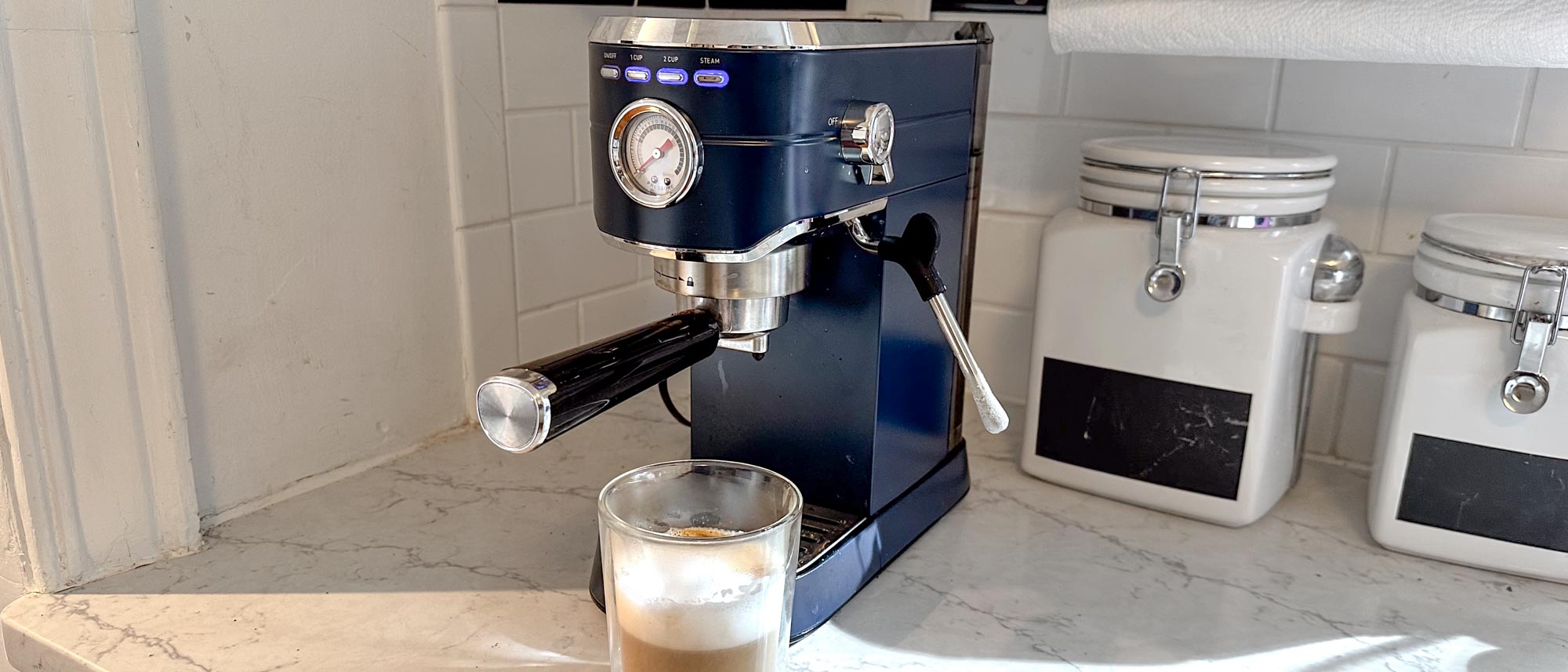Tom's Guide Verdict
The Casabrews is a great budget espresso machine, if you’re willing to live with a few compromises.
Pros
- +
Compact
- +
Inexpensive
- +
Makes good coffee
Cons
- -
Steam a bit tricky to use
- -
Can’t use super-fine grounds
- -
Flimsy tamper
Why you can trust Tom's Guide
Dimensions: 12.3 x 12 x 5.9 inches
Materials: Stainless steel, plastic
Capacity: 31 fluid ounces
Settings: 1 and 2 cups and steam
Removable water reservoir: Yes
Pressure: 20 bar pump
Milk frother: Yes
Grinder: No
Accessories: Tamper and cleaning tools
One of the issues with my kitchen is that there isn’t much counter space, so many of the best espresso machines would simply take up way too much room. The Breville Bambino Plus, currently at the top of our list, has a much smaller footprint, but at $400, it isn’t cheap.
So, I was interested to see how well the Casabrews Espresso Machine CM5418 would perform, despite its less-than-caffeinated name.
At 6 inches wide, it has an even smaller footprint than the Bambino, and at $140, it’s less than half the price, too. But, does it pull a good espresso, and how well can it steam milk? You’ll have to read the rest of my review to find out.
Price and availability
You can find the Casabrews on sale at Amazon and other online retailers; the silver model costs $139, while colored versions (baby blue, cream, black, pink, and dark blue) sell for $169. It has been available since June 2022.
Casabrews Espresso Machine: Design and accessories
For a budget espresso machine, the Casabrews has a very nice, classic design. You’re not getting an all-metal build — the side panels are made of plastic — but it’s attractive for the price. On the front are four buttons (power, one cup, two cups, and steam), as well as a pressure gauge. On the right side is a knob to steam and hot water. The tray at the bottom of the machine is removable, so you can empty and clean it out if it becomes filled with water and coffee grounds. At the rear is a removable tank, which holds 34 ounces of water. That’s about half the size of the Bambino’s tank, so you’ll be refilling it more often.
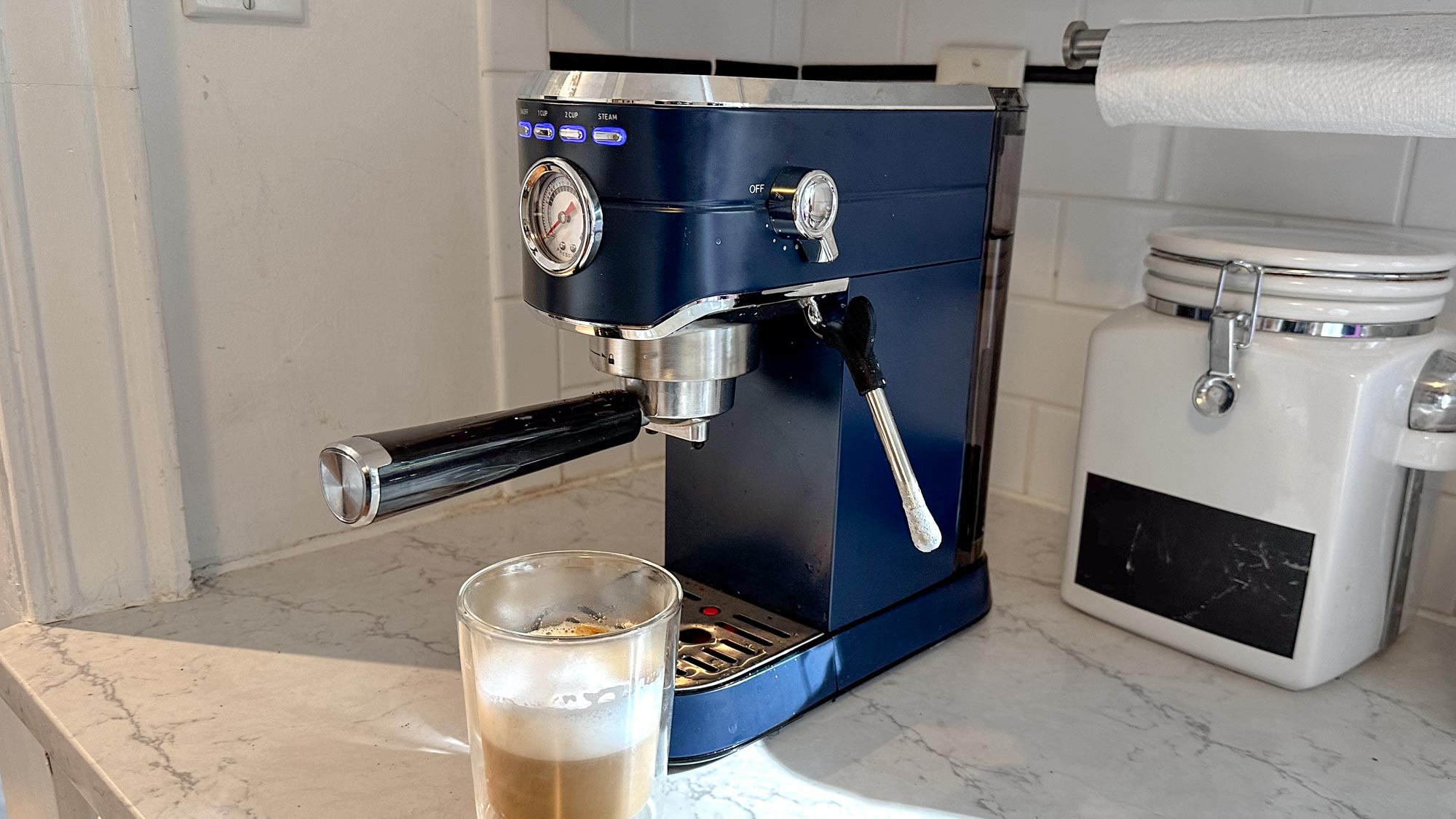
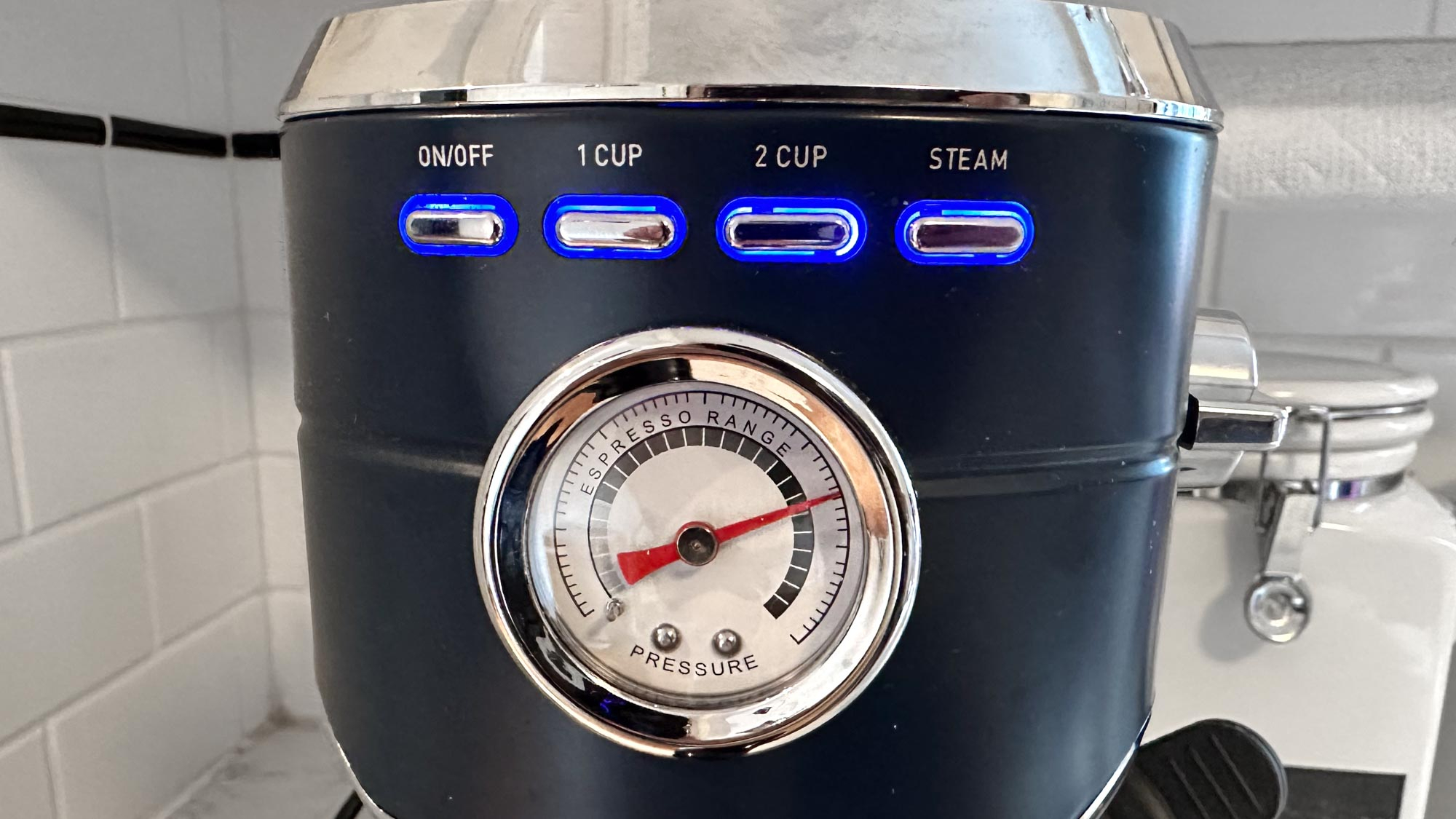
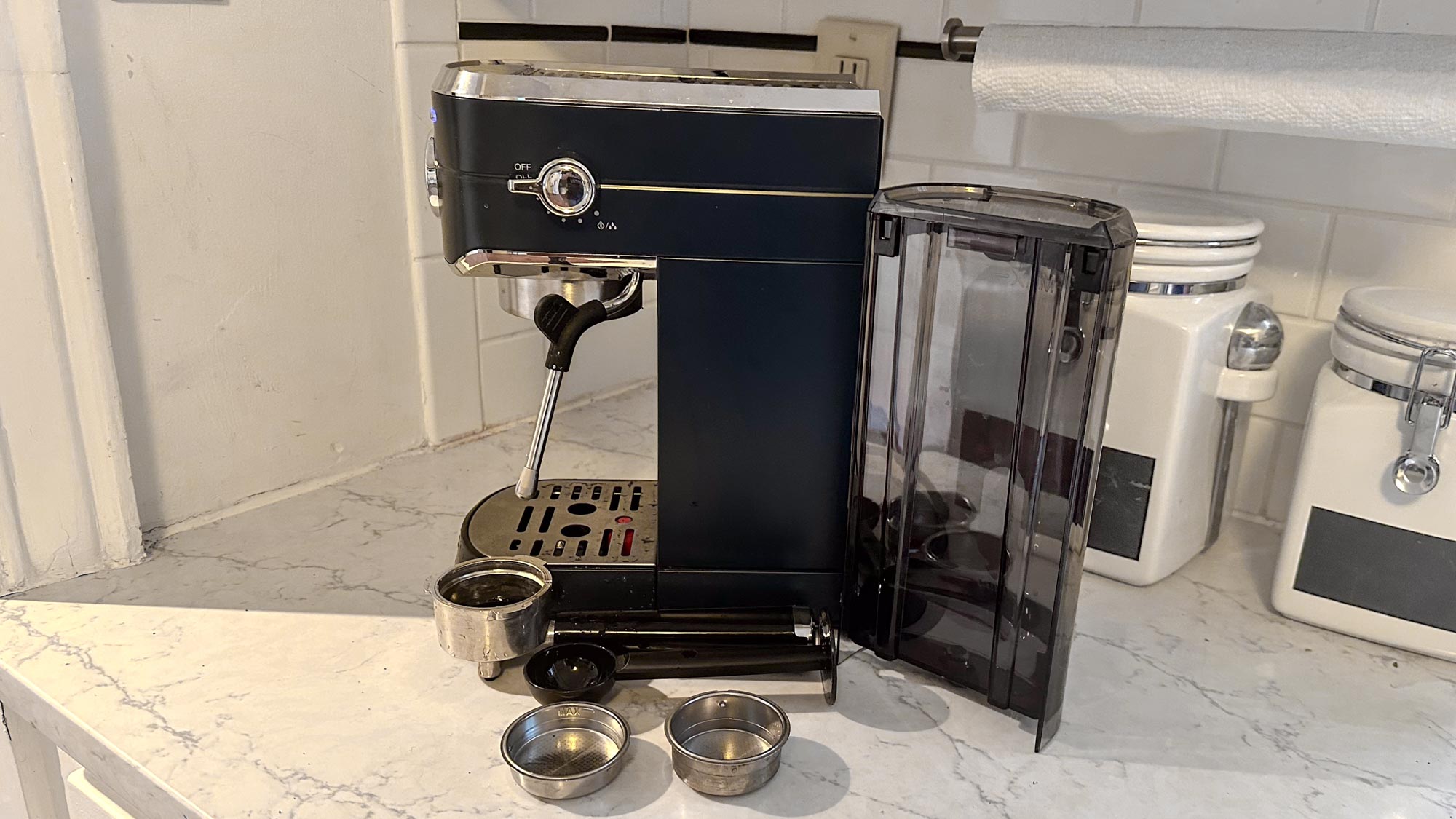
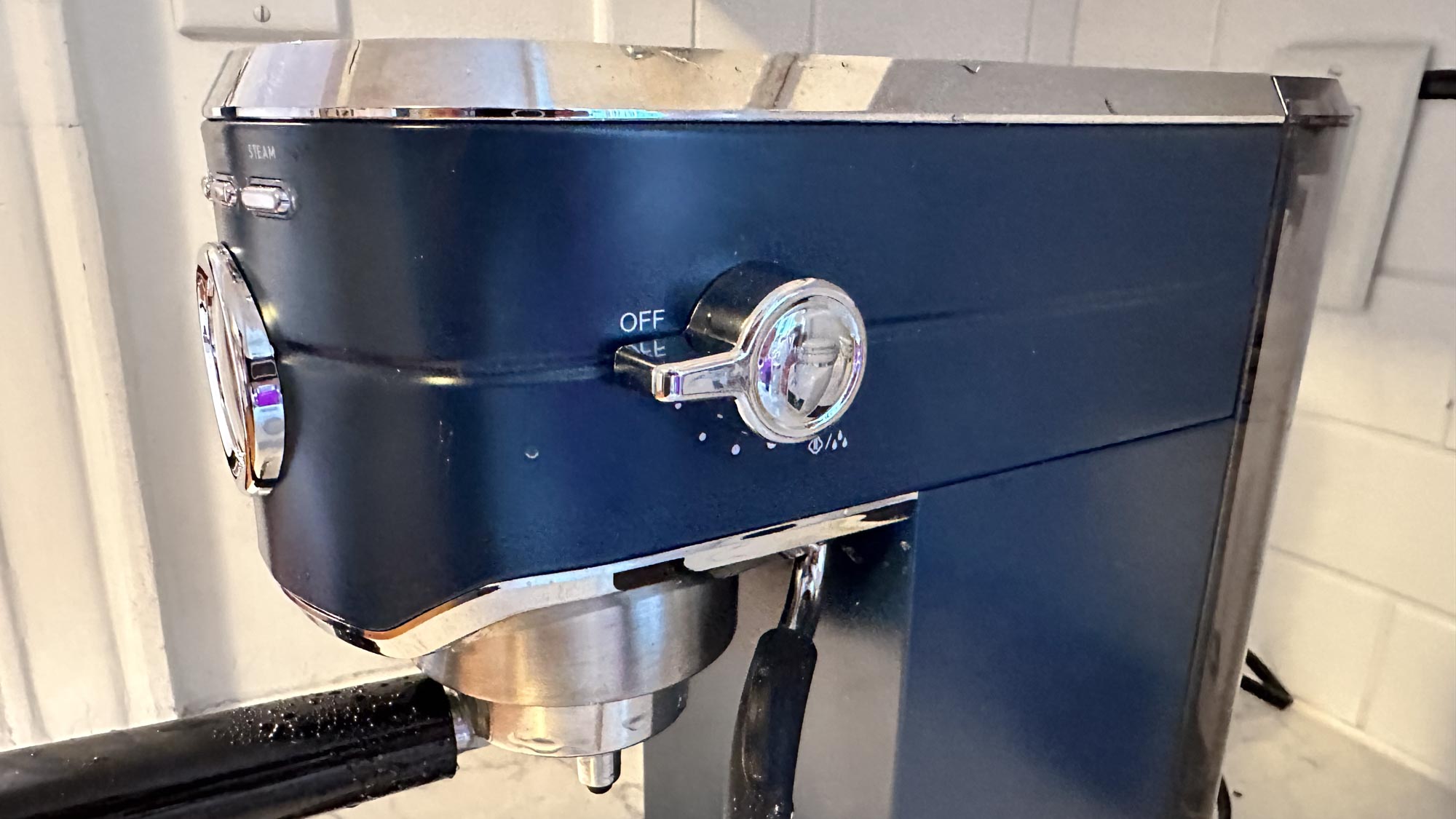
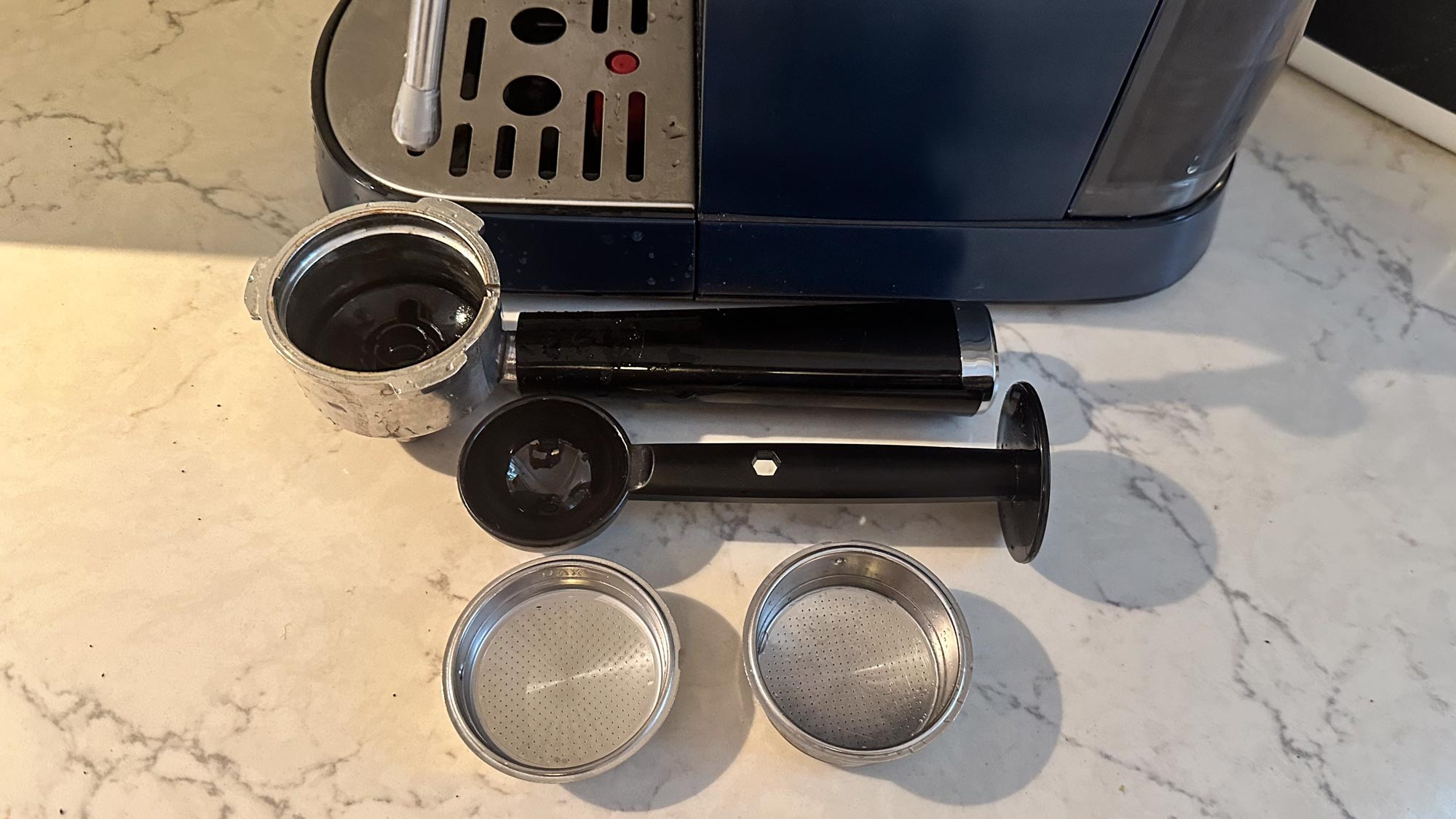
I also like that the machine comes in a variety of colors (baby blue, cream, black, pink, and dark blue) if you want something a little bolder than the standard stainless steel/silver.
The Casabrews machine measures 12.3 x 12 x 5.9 inches, about the size of two rolls of paper towels standing on end. It easily slid underneath my cabinets with room to spare.
There are a few concessions to get such a low price. For starters, the Casabrews’ portafilter, while sturdy, doesn’t feel as substantial as those I’ve tested from Breville and De’Longhi. And, the filter cups (you get a one-cup and a two-cup filter) themselves are a little loose.
Additionally, the tamper/scoop that comes with the machine is a somewhat flimsy piece of plastic, rather than a solid piece of metal. It gets the job done, but I couldn’t tamp the coffee down with as much force as I’d like. Unlike the Bambino, a metal milk frothing jug is not included. Fortunately, you can find those for pretty cheap online.
Casabrews Espresso Machine: Performance
Overall, I found that the Casabrews makes a pretty good espresso for the price. You’re not going to get the same quality as you would with a Breville, but you can’t expect the world from a budget machine. However, it consistently made espresso that was plenty hot and flavorful.
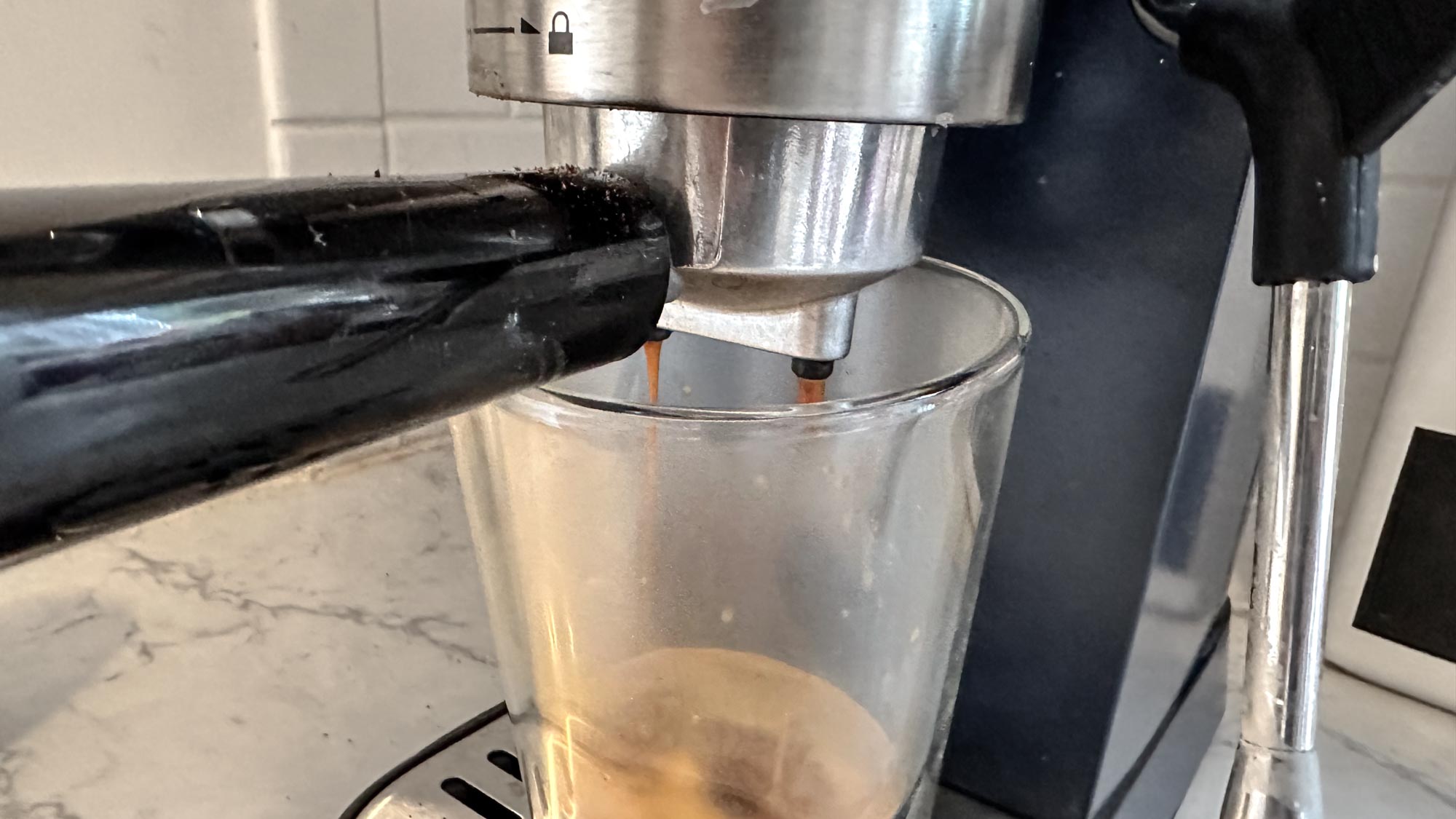
For instance, even though the Casabrews advertises that its machine delivers 20 bars of pressure, it didn’t deliver the same, thick, consistent crema as I’ve seen on more expensive models. I also found I couldn’t use the finest setting on my coffee grinder (the $195 Fellow Opus), as the grounds were too compact for the Casabrews to adequately pump out coffee.
The pucks of used coffee grounds are also a bit wetter than with pricer machines, so you can’t simply bang the portafilter on the side of your compost bin to empty it of grounds.
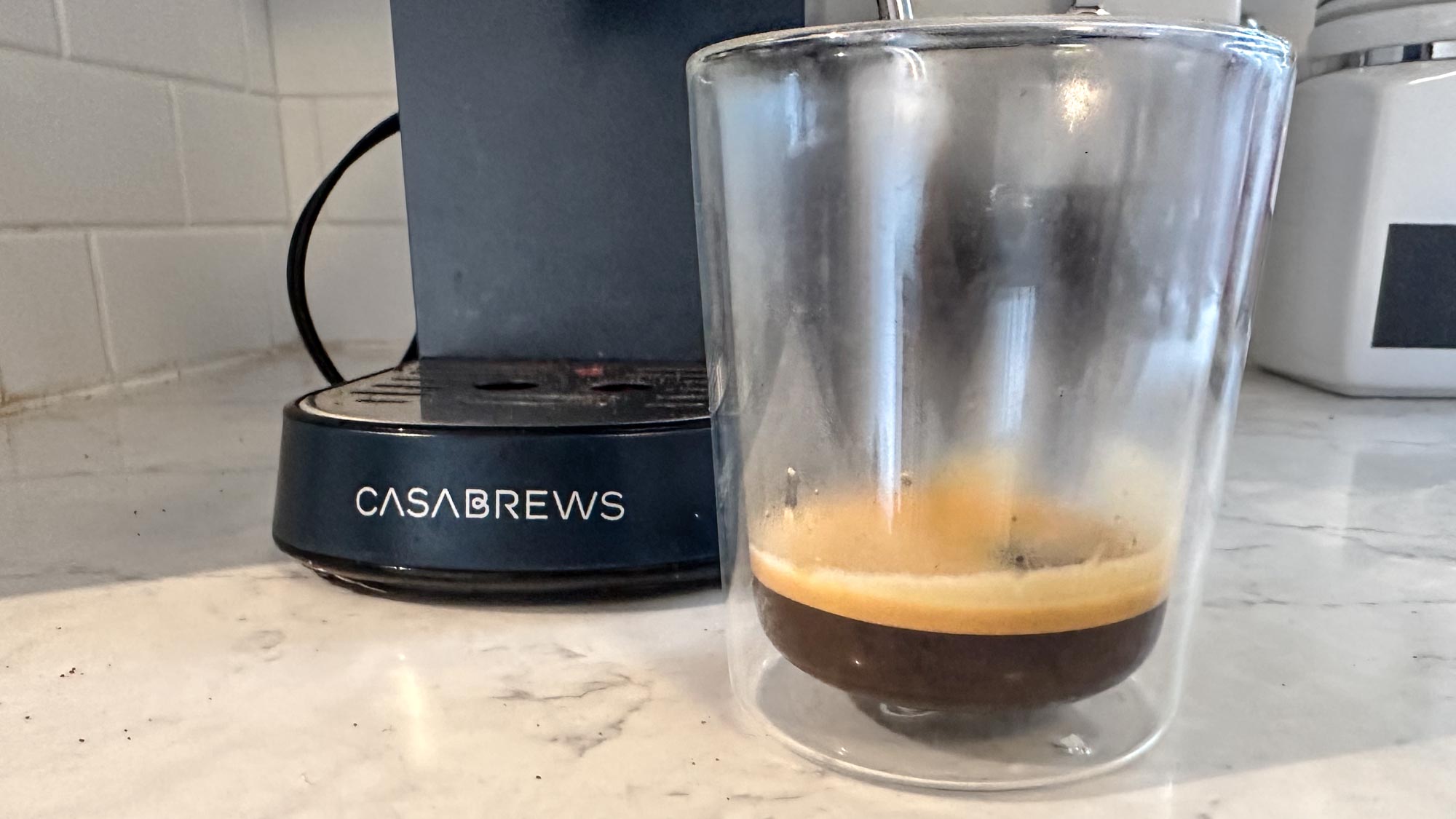
Steaming milk is also more of a process than on more expensive espresso machines. Rather than simply pressing a button, you have to first press the steam button, wait for the button to stop flashing, and then turn the knob on the side to the steam setting. When you’re done, you press the steam button to stop the action, and then wait for the steam to subside.
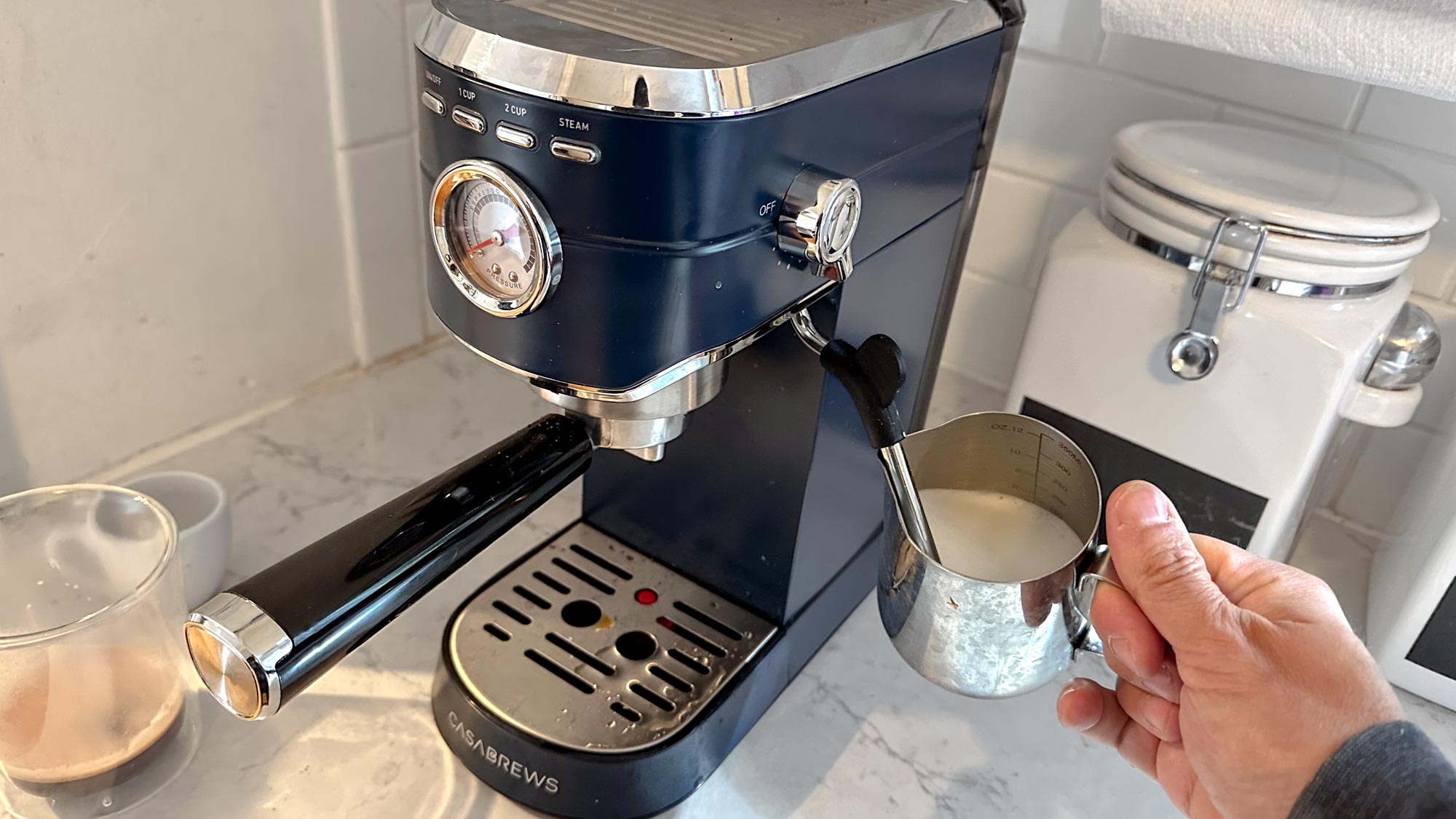
It takes a few seconds longer to stop than on pricier machines; I mindlessly didn’t realize it at first, and ended up spraying milk foam around my kitchen. It also makes a much louder thunk-thunk-thunk sound than other espresso machines as it’s making steam, too.
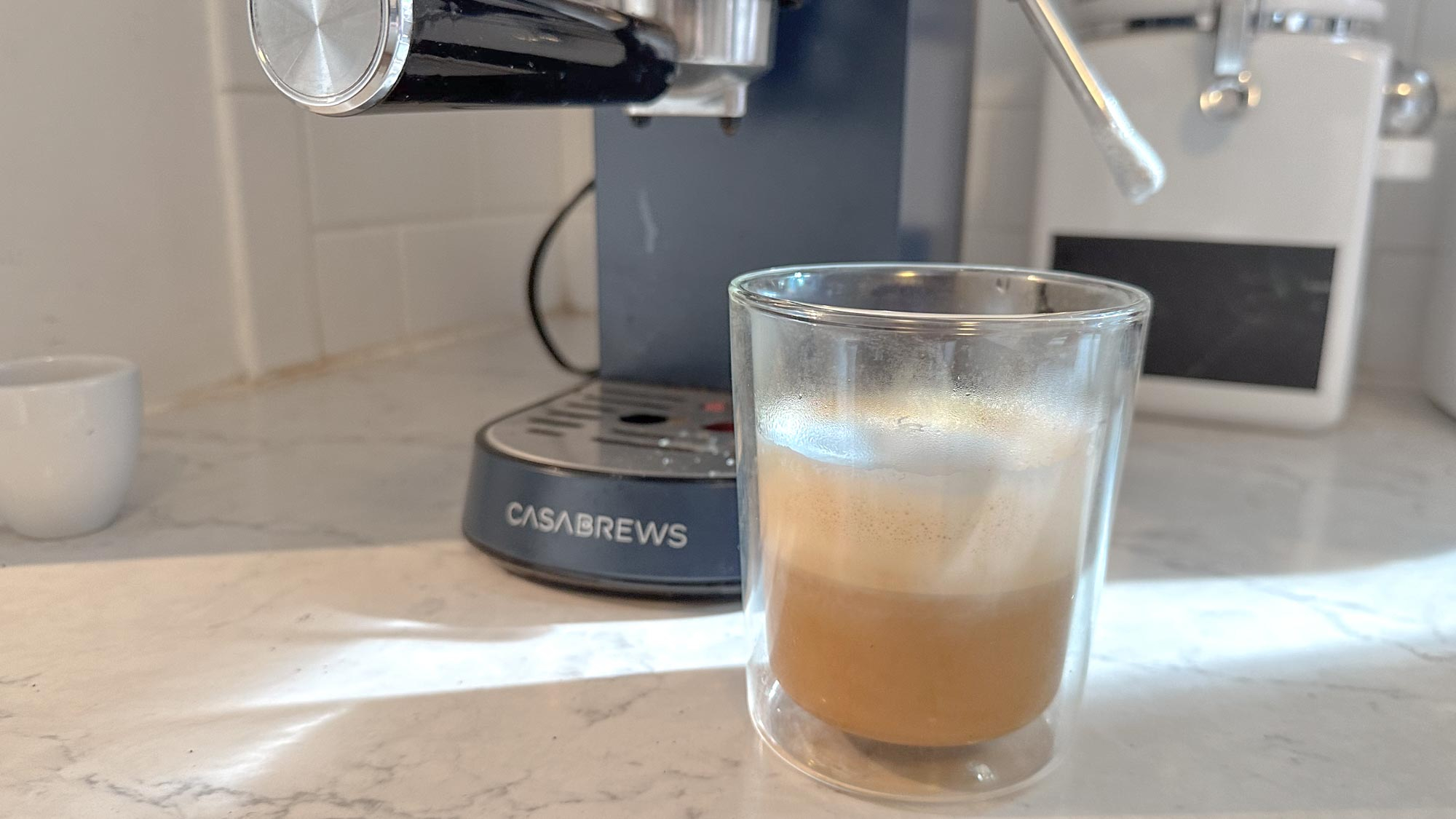
Casabrews Espresso Machine review: Verdict
For the cost of about 35 venti lattes at Starbucks, the Casabrews Espresso Machine CM5418 will make you a pretty darn good copy in your own home — or better, depending on how you feel about Starbucks.
While there are some compromises when compared to the best espresso machines, you’re not sacrificing all that much in the name of economy. The Breville Bambino Plus is still our top pick overall, as it offers superior performance and ease of use. But if you’re looking for a less expensive alternative, the Casabrews is definitely worth a look.

Michael A. Prospero is the U.S. Editor-in-Chief for Tom’s Guide. He oversees all evergreen content and oversees the Homes, Smart Home, and Fitness/Wearables categories for the site. In his spare time, he also tests out the latest drones, electric scooters, and smart home gadgets, such as video doorbells. Before his tenure at Tom's Guide, he was the Reviews Editor for Laptop Magazine, a reporter at Fast Company, the Times of Trenton, and, many eons back, an intern at George magazine. He received his undergraduate degree from Boston College, where he worked on the campus newspaper The Heights, and then attended the Columbia University school of Journalism. When he’s not testing out the latest running watch, electric scooter, or skiing or training for a marathon, he’s probably using the latest sous vide machine, smoker, or pizza oven, to the delight — or chagrin — of his family.
